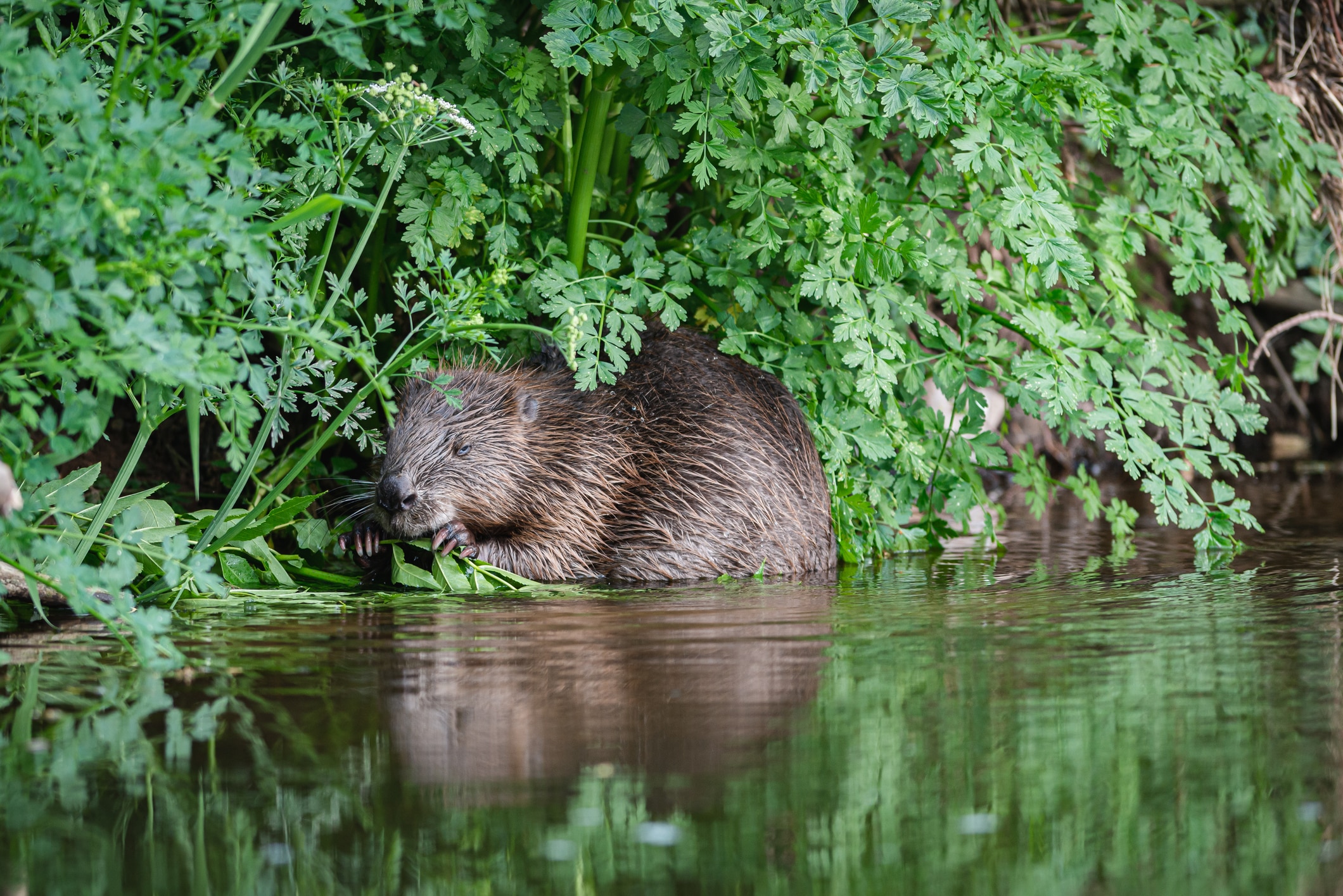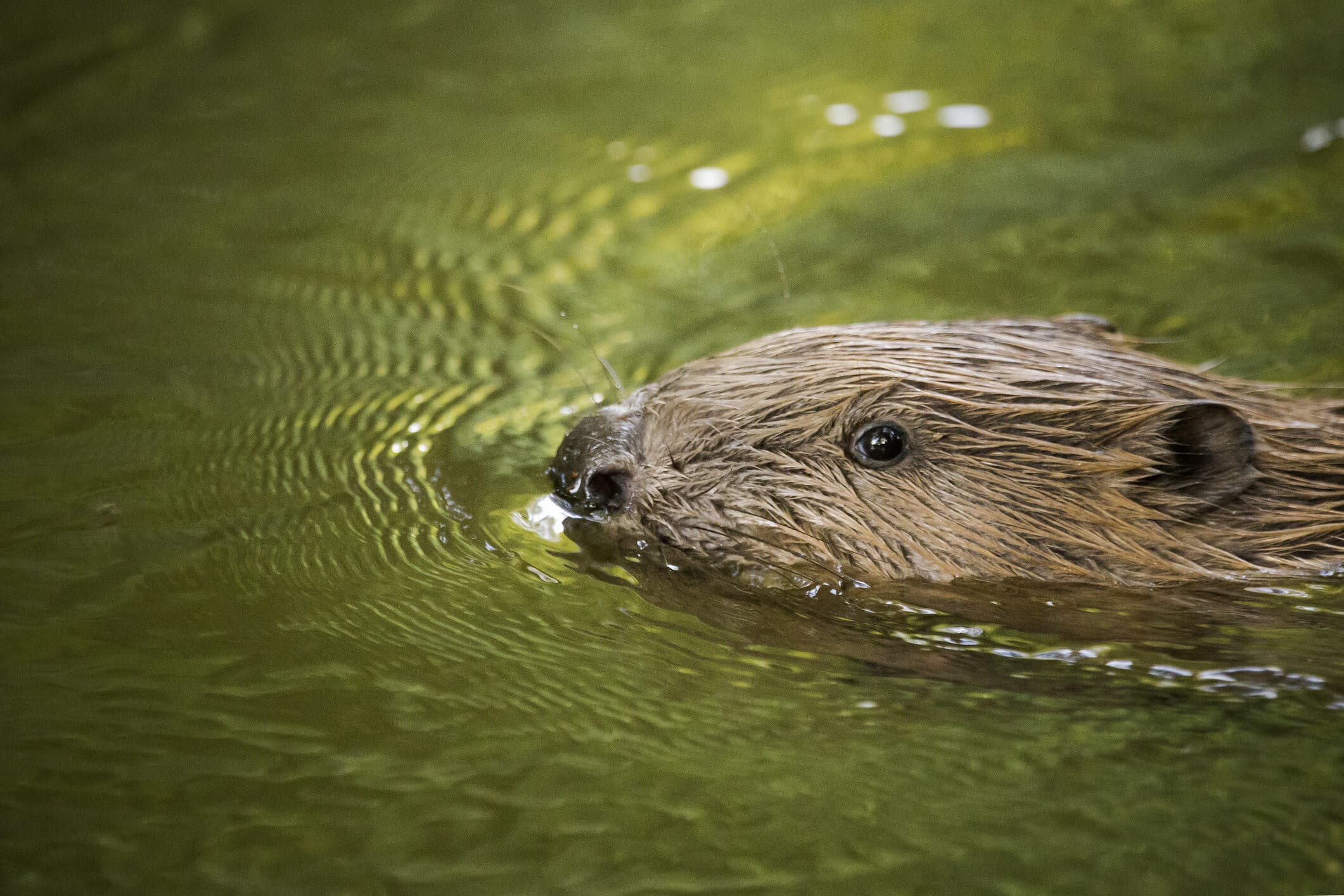Beavers have been released into British countryside to combat the effects of climate change
The image of a beaver gnawing on the bark of a tree in the wilderness seems a long way from the British countryside.
Any likelihood of witnessing such a scene virtually disappeared in the UK 400 years ago when the animals were hunted to the brink of extinction because they were valued more for their pelts than for the role they played in preserving nature’s balance.
As a result, beavers and their dam-building activities, largely disappeared from these shores.
They were not missed by farmers and landowners who historically have persecuted them for the damage they cause to trees and for the localised flooding their dams can cause on valuable farmland.
But times change and as the world seeks solutions for an array of climate change problems the humble beaver has become something of a secret weapon and is making a comeback in the UK as flooding becomes an almost daily reality.
In 2019, researchers at the Vienna University of Technology reported that climate change is causing floods to become more severe across northern Britain and north west Europe.
The study published in the journal Nature analysed records from 3,738 flood measurement stations across Europe over five decades and northern England and southern Scotland have seen an increase in flooding of more than 11 per cent.
The UK has seen a pattern of severe flooding over the past 10 years which the Environment Agency says is linked to an increase in extreme weather events.
Families forced to leave their flooded homes in Shropshire in February were among the latest in a long line of families hit by floods over recent years.
Beavers may only be part of the solution but after being re-released into the countryside in some areas wildlife experts have been surprised at how they have not only helped other forms of wildlife thrive but how their dams can stop flooding much further downstream.
The beaver dams significantly slowed the flow of water downstream, protecting against flooding
Beavers are a “keystone” species, which means they manage the landscape around them, building dams, creating pools in rivers and streams that store water – which can cause small-scale localised flooding – but which slows the flow of bigger volumes of water downstream.
A five-year trial of their reintroduction on the River Otter in Devon by the Devon Wildlife Trust has been monitored by experts at Exeter University who found a significant impact on water flow and flooding.
When the trial began in 2015 two family groups who had been living wild on the river – but were due to be re-homed amid fears they were breeding – were allowed to remain on the water.
The trial saw five more beavers released and the Trust says there are now at least seven breeding pairs – and possibly as many as 13 families – on the River Otter. The animals began dam-building – to create pools where they feel safe – and they created a more varied habitat.
Dams also started to appear on the adjoining River Tale, creating larger areas of new freshwater habitats.
The beaver dams significantly slowed the flow of water downstream and reduced the peak flows after heavy rain, potentially protecting against flooding.
They have created beautiful areas of new habitat benefiting water voles, otters and wading birds
They have also helped keep water in the streams in times of drought and the dams catch sediment and inorganic fertilisers being washed from farmland helping plant life to flourish in the beaver ponds and boosting other types of wildlife.
In total the beavers have built 13 dams creating new ponds with canals to link them.
Researchers say that, although dams are often washed away by storms, the beavers have restored natural riverbanks, making more meanders (bends in rivers that slow water flow).
The Government gave approval that the otters could stay in October 2020, paving the way for more extensive controlled releases in England.
Professor Richard Brazier from Exeter University, who led the research into the flooding impact, said: “It’s an amazing story – it’s far more change than we expected.
“The effects have been profound. They built 13 dams up slope of which there are large pools of water now. When it rains the pools fill up in a kind of staircase and there is a lot of storage capacity there. That water before the dams were built would have taken maybe ten or 20 seconds to move through the site but now it is taking a number of hours to move.
“So the flood peak is what we call attenuated – it is flattened out – and the floods take a lot longer to move through the site now the beavers have done their work.”
Devon Wildlife Trust’s Mark Elliott, who leads the Devon Beaver Project, said the dams have had a big impact. He said: “They have created beautiful areas of new habitat benefiting water voles, otters and wading birds such as snipe and woodcock.
“It has been really beneficial from a conservation point of view.”
One spin off has been an increase in tourism to the River Otter benefiting local pubs and cafes. But the potential to arrest flooding in heavy rain has been offset by critics who claim the beavers damage farmland.
Claire Robinson, the National Farmers’ Union senior countryside adviser, said: “Any species introduction, particularly if it has not been in this country for hundreds of years, can have a massive impact on the many benefits that the countryside and farming delivers.
“Beavers in the wild could have potentially serious implications on farmland such as land drains being blocked in lowland arable areas.”
Despite these concerns Prof Brazier said land management was the key to solving the problem.

A Devon beaver. Picture from Josh Huxham on iStockPhoto
He added: “When the dams are built it does push the water sideways and that land has got wetter.But in terms of the more intensively managed pastures to either side there is no sign at all of the water being pushed into that farmland and so it hasn’t had an impact on the local farming productivity. It is possible they could block streams and ditches which might result in farmland being flooded.
“If that happened what would have to happen to follow on would be some management of those beavers – modification of the dams to make sure they don’t flood high value farmland.
“Overall, the social and economic benefits of having beavers in the landscape far outweigh the costs.”
The National Trust is now planning to release three pairs of beavers into enclosures at Holnicote on the edge of Exmoor in Somerset and Valewood on the edge of the South Downs in West Sussex, where it hopes their dams will help reduce flooding.
Ben Eardley, project manager for the National Trust at Holnicote, added: “Their presence in our river catchments is a sustainable way to help make our landscape more resilient to climate change and the extremes of weather it will bring.
“The dams the beavers create will hold water in dry periods, help to lessen flash-flooding downstream and reduce erosion and improve water quality by holding silt.”
The Cornwall Wildlife Trust also released two beavers near Woodland Valley Farm near Ladock in 2017 and again their dam building activities are being monitored by Exeter University.
And beavers were given protected status in Scotland in 2019 after they were successfully reintroduced in the Scottish Beaver Beaver Trial which began in 2009.
From May 2019 it became illegal to kill them or destroy established dams and lodges without a licence.
It looks like beavers are definitely back and the way forward appears to be new management strategies aimed at compensating farmers and landowners who may be adversely affected by beavers whose activities it is now generally accepted are good for the countryside.
Subscribe
Sign-up to receive our newsletter





